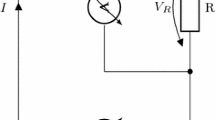Abstract
The focus in High-Performance Computing increasingly turns to energy efficiency. Therefore the pure concentration on floating point operations and runtime performance is no longer sufficient. In terms of hardware, this change of paradigm has already taken place: The GREEN500 list as counterpart to the runtime performance oriented TOP500 list has been established. The new metrics take runtime and energy consumption into account. Nevertheless, all these developments consider hardware only—still an inadequate situation to face the challenges of Energy-Efficient Exascale Computing. The necessity of optimizing simulation software with respect to power and energy draft demands for detailed profiling of the power consumption during the calculations and a norm quantifying the respective efficiency. In this paper we propose a unified energy footprint for simulation software that enables a fast comparison between different models, implementations and hardware configurations, respectively. By way of example we provide the footprints for the tomographic reconstruction code PyHST optimized for CPU and GPU operation as well as the operational numerical weather prediction model COSMO. We then discuss the power and energy profiles and investigate the effects of scaling with respect to hardware resources and simulation parameters.





Similar content being viewed by others
References
Bekas C, Curioni A (2010) A new energy aware performance metric. Comput Sci Res Dev 25:187–195. doi:10.1007/s00450-010-0119-z
Castillo M, Dolz M, Fernandez JC, Mayo R, Quintana-Orti ES, Roca V (2011) Evaluation of the energy performance of dense linear algebra kernels on multi-core and many-core processors. In: 2011 IEEE international symposium on parallel and distributed processing workshops and Phd forum (IPDPSW), pp 846–853
Chilingaryan S, Mirone A, Hammersley A, Ferrero C, Helfen L, Kopmann A, dos Santos Rolo T, Vagovic P (2011) A GPU-based architecture for real-time data assessment at synchrotron experiments. IEEE Trans Nucl Sci 58:1447–1455
Doms G, Schättler U (2002) A description of the nonhydrostatic regional model LM. Part I: dynamics and numerics. Deutscher Wetterdienst, Offenbach
Dongarra J et al. (2011) The international ExaScale software project roadmap. Int J High Perform Comput Appl 25(1):3–60
Flato GM (1992) Spherical grid cavitating fluid sea ice model: linear drag, Arakawa C-grid version: documentation. Ice-Ocean Dynamics Laboratory report, Thayer School of Engineering, Dartmouth College
Gurumurthi S, Sivasubramaniam A, Irwin MJ, Vijaykrishnan N, Kandemir M (2002) Using complete machine simulation for software power estimation: the softwatt approach. In: Proceedings of eighth international symposium on high-performance computer architecture, 2002, pp 141–150
Hammersley A, Mirone A High speed tomography reference manual. Available online: http://www.esrf.eu/computing/scientific/HST/HST-REF/
Ou J, Choi SB, Prasanna VK (2005) Energy-efficient hardware/software Co-synthesis for a class of applications on reconfigurable SoCs. Int J Embed Syst 1:91–102
Redelmeier R http://www.digipedia.pl/man/doc/view/burnp6.1/
Ritter B, Geleyn JF (1992) A comprehensive radiation scheme for numerical weather prediction models with potential applications in climate simulations. Mon Weather Rev 120(2):303–325
Slingo J, European Centre for Medium Range Weather Forecasts (1985) Development of the operational parameterization scheme
Steinke S, Knauer M, Wehmeyer L, Marwedel P (2001) An accurate and fine grain instruction-level energy model supporting software optimizations. In: Proc int workshop power & timing modeling, optimization & simulation (PATMOS)
Steppeler J, Doms G, Schättler U, Bitzer HW, Gassmann A, Damrath U, Gregoric G (2003) Meso-gamma scale forecasts using the nonhydrostatic model LM. Meteorol Atmos Phys 82:75–96. doi:10.1007/s00703-001-0592-9
Super Micro Computer, Inc (2010) Supermicro X8DTG-QF User’s Manual, revision 1.0a edition
Tiwari V, Malik S, Wolfe A (1994) Power analysis of embedded software: a first step towards software power minimization. IEEE Trans Very Large Scale Integr (VLSI) Syst 2(4):437–445
Author information
Authors and Affiliations
Corresponding author
Additional information
The authors want to thank Peter Schöck, Frederic Hupbauer and Alexander Biewer for their support in employing the measurement setup. Furthermore, thanks go to KIT for funding the project in the framework of a Startup-Project.
Rights and permissions
About this article
Cite this article
Anzt, H., Beglarian, A., Chilingaryan, S. et al. A unified energy footprint for simulation software. Comput Sci Res Dev 29, 131–138 (2014). https://doi.org/10.1007/s00450-012-0225-1
Published:
Issue Date:
DOI: https://doi.org/10.1007/s00450-012-0225-1




